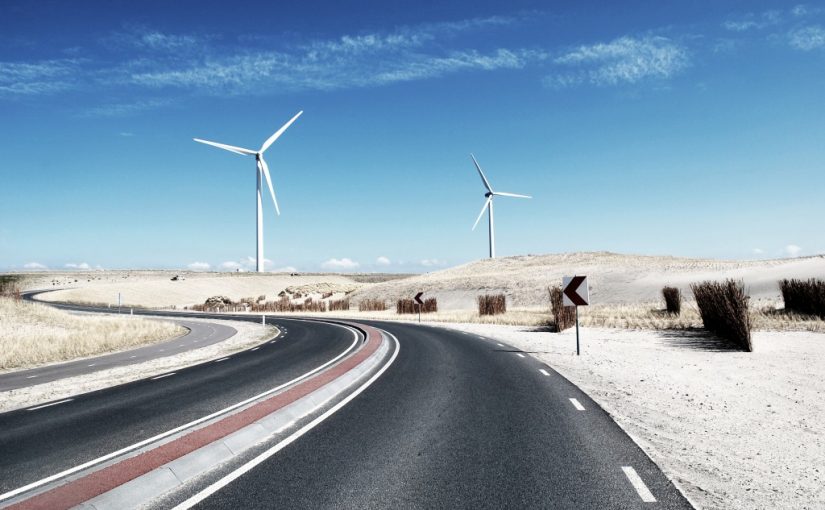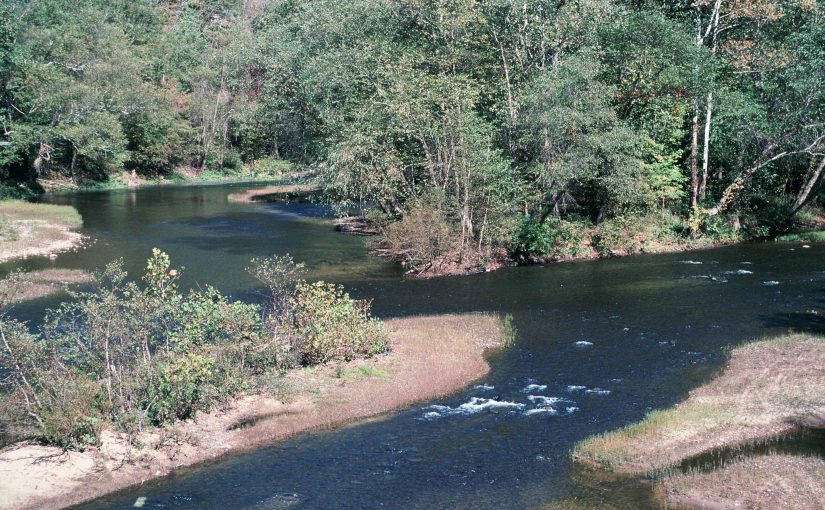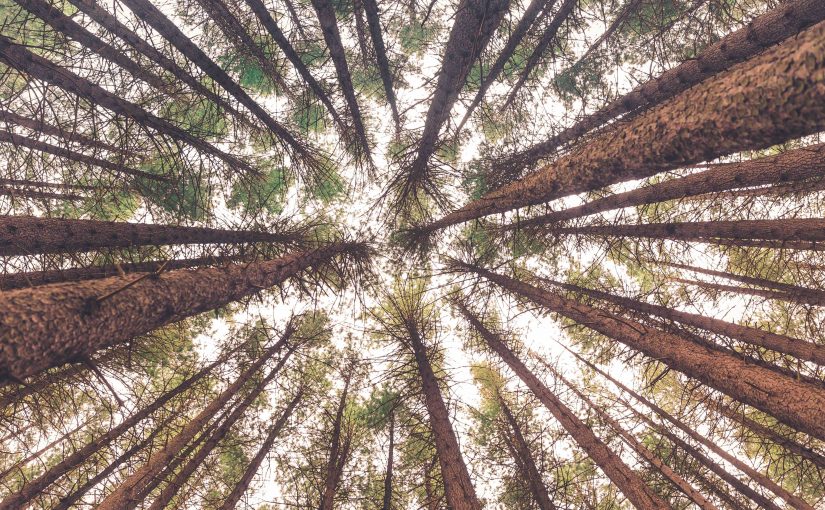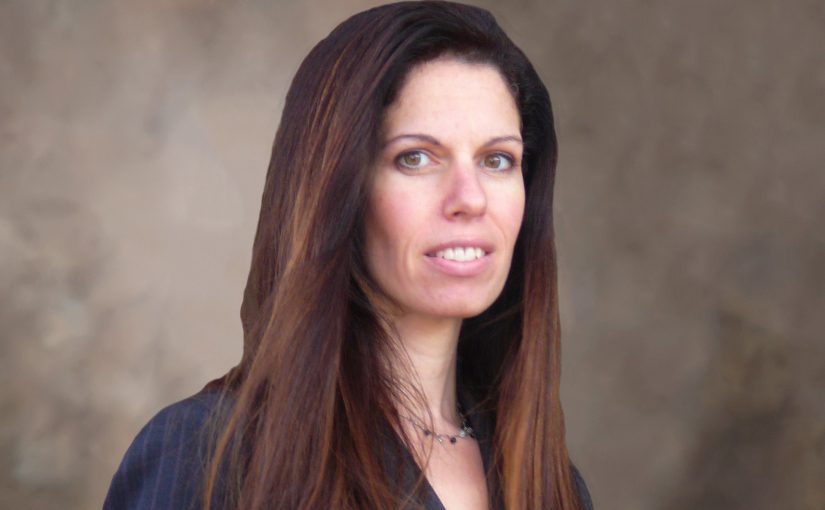Dear Bioneers Friends and Supporters!
Happy New Year! Thanks to your committed partnership, our 2014 was a milestone year and a celebration of our 25th Anniversary. We’re excited to share with you a sneak peek of what’s to come in 2015. Read on for more!
Watch Your (Snail)Mailbox
Your Limited Edition 25th Anniversary Yearbook Copy Coming Soon
We hope you enjoyed our year-end emails serializing chapters of our 25th anniversary yearbook, Seeing Around Corners: 25 Years of Visionary Leadership.
As a Bioneers supporter, you’ll be receiving a copy of the print edition as a token of our gratitude. Look for it in your mailbox in February. Savor and share it with friends and allies.
You can see the entire Yearbook right now as a digital download. Your feedback is most welcome. We love the back cover—what do you think?
Save the Dates
Kinship Circle Trip to Maui
May 22-26, 2015
Last year’s inaugural Kinship Circle expedition to Maui was an unforgettable journey into indigenous Hawai’i. It was inspiring, revitalizing and soulful, not least because so many of you got to meet each other and form lasting friendships.
Together with Board member Melissa Nelson’s Cultural Conservancy, we’re putting together a fresh program of teachers and guides for this expedition that will be equally inspiring. We’re in it for the long haul with our Hawaiian allies.
Among the high points of the 2014 trip:
- A mind-blowing presentation by a global indigenous leader in reviving traditional canoe culture globally using the astonishing Traditional Ecological Knowledge of Polynesian star navigation.
- A tour of Jeffrey Bronfman’s leading-edge Permaculture HAPI farm where we engaged with the ground-zero frontlines of Hawaii’s indigenous and multi-cultural resistance movement to stops GMOs in the research belly of the corporate beast. Later in the year a ballot initiative did indeed halt all GMO testing—for now.
- Gorgeous outings to the Seven Sacred Pools, a traditional sunrise ocean ceremony, and daily swimming.
- Deep dialogue and insight into Hawaiian Aloha cultural traditions with spiritual leaders such as the revered Auntie Pua and others, and cross-cultural comparisons with mainland native people’s beliefs led by the powerful Rose Van Thater.
- Amazing food, even more amazing company, and slow time with magical Kinship Circle folks, Nina and Kenny, Melissa Nelson, Cara Romero (our Indigenous Knowledge program director) and executive director Joshua Fouts. As one Kinship member commented, it was the first such gathering she had ever participated in where she wanted to have dinner with every person there.
The Kinship Circle is a vibrant group of engaged higher donors ($25,000 and up) committed to the Bioneers vision and mission. If you’d like to join us on this second journey, please contact Maria Rotunda at 505.395.2801 or maria@bioneers.org. If you are not currently a member of the Kinship Circle but are able to consider the higher gift level, you are welcome to come.
Bioneers Donor Spotlight:
Seven and a Half Questions for Courageous Lauren Embrey
By Joshua Sheridan Fouts
In response to the economic downturn of 2008, many philanthropic institutions cut back on grants. Not Bioneers Kinship Circle member Lauren Embrey. Read on to learn about Lauren’s passionate approach to philanthropy, why she supports Bioneers, and her advice for young philanthropists.
1. How has your view and approach to philanthropy changed since you first started?
Wow…it has evolved, grown and blossomed. I didn’t know much, if anything, about philanthropy when I first started, so it was great to go into the work without any expectations or beliefs on the “right” way to do things. The first and most important learning was that of strategy, the importance of it, and how to develop it. I also learned very quickly that this was serious business and required great thought, care and heart to do it well.
So, my view has not necessarily changed since I first started, but developed. It has developed through my intense commitment to philanthropic education, my explorations surrounding cutting edge thinking and innovative initiatives and my experiences with those who came before and relationships with those doing the work in the world.
2. What was it that inspired you to spend-down your foundation’s corpus instead of only spending the interest as is the tradition in many foundations? Why?
I was inspired by a moment in history. The inspiration came during the economic downturn of 2008. It was a time when many philanthropic institutions and foundations of all sizes were cutting back on their grant dollars, they were concerned about the uncertainties of the economy. They needed to sit back and wait, watch and see what was going to happen. They had a fiduciary responsibility to their endowment and were not at liberty to continue spending down.
We had the latitude to react differently. I wanted the Embrey Family Foundation to be a role model for bigger and bolder giving, At a time when non-profit organizations and communities were in dire need of funds, people were suffering, I wanted to step out and say: “We are not going to hold back, we are going to seize this moment and give at a higher level than we ever have before, because our business is helping people, and there could not be a more important time to distribute funds in response to that need.”
I wanted to be a role model to shift the paradigm away from monetary accumulation and toward the universal wisdom of when we give we receive. I wanted to visibly and concretely express my faith in that wisdom. I wanted to harness the energy I felt was palpable in that moment to make change, I wanted to step into that energy, fully, with all the resources available to me, meaning dollars, networks, experiences and leadership. I knew the need for work in the area of systemic change, now was the time to take that on. I also knew I would learn so much from this experience if I just plunged in. And I did.
3. Has there been any response from other foundations? If so, how have they responded?
There has not been a direct response from other foundations regarding our level of contribution, though when I speak about this and mention the percentage of our corpus we have contributed over the past few years people react in a very positive way. I have heard directly from others that we are respected and admired in the community for our strategic giving and the values we exhibit through our process.
4. What is your advice to other young philanthropists entering into this field?
Be open to all possibility. Be willing to step into your passion and therefore your power. Take the time to let your strategy develop, let it be a process of discovery…all does not need to be known immediately. Be flexible and nimble within your parameters. Stay true to what you care about and let that fuel you. Display pure intent and apply a willingness to learn, explore and experience. There are so many amazing people to learn from…network, listen and enjoy the ride. We are so blessed to be able to do this work. Revel in that blessing.
5. What specifically inspired you to support Bioneers among all the many good organizations that are in your universe?
The first year I went to Bioneers, I believe it was 2011, I was blown away by the innovative and cutting edge thinking that was presented at the Conference.
I was so invigorated and inspired by the way all the justice movements—environmental, social, women, indigenous—were woven together and intersected so beautifully. That is how I believed!! And it was so exciting to me to see this intersectionality executed with such precision and grace.
I felt Kenny and Nina, and all the speakers there were visionaries. Not only were they visionaries but they also brought in their constituencies, their communities into the conversation. All voices were heard, respected and appreciated. I wanted to help support that, and I wanted to support the experiential learning and the collectives that were nurtured and contained within the dialogue.
6. Bioneers co-founder Kenny Ausubel talks about how we are in an era that has moved from “urgency to emergency” in reference to our ability to react and respond and create meaningful change despite massive shifts caused by climate disruption. What do you think are the most pressing issues that philanthropy should be addressing in this time of “urgency to emergency?”
Violence and destruction and inequity: from violence against women to destruction of the earth to racial inequity. When I say that I mean it in all its forms. There is so much to do. We must tackle the principles and beliefs embedded in our institutions and our culture. We must uncover our unconscious and implicit biases to get to the root, the core. We must create balance, promote love. We must understand that violence produces violence, that if we don’t respect our women, how can we respect our earth. We must see how this is all interconnected. Ultimately, I believe, if people follow their passions and get involved in the issues they care about deeply and work for that….everything will be covered!!
7. Bioneers is about building bridges between cultures and generations. As you know, we have a big focus on youth leadership and youth scholarships to create this bridge. If you could time travel back to a 15-year-old Lauren, what words of advice would you give her about the world she is about to enter?
Don’t be afraid…don’t hold back…move forward as soon as you can, experience the world and all it has to offer, find your way, keep your eyes open and always stay positive. Believe in yourself and what your heart tells you. Ask for help, learn from others, stay humble and don’t close off. Use your voice, even when it’s really scary to do so. Network, find your tribe, and use your passion to fuel you. Don’t ever give up!
7.5. What words of advice do you have for the youth leaders attending Bioneers this year?
In addition to the above….drink up this experience…meet as many people as possible and share your thoughts, your ideas, your passions. Enjoy to the fullest, always believing in yourself!
The Sting:
Scamming Philanthropy
By Kenny Ausubel
As the saying goes, “Money is like manure. When you pile it up, it stinks. When you spread it around, it does a lot of good.”
As wealth has continued to concentrate at the tippy top and reached Gilded Age extremes, a whole lot of dough is piling up. Close behind are the big dogs of the financial services industry sniffing for tax breaks to hold on to it and make more. Enter the latest philanthropic sting—donor-advised funds.
Hold your nose when you read the recent New York Times exposé. As my grandmother used to say, “Figures don’t lie, but liars figure.”
Huge clots of “philanthropic” dollars are now tied up in “donor-advised funds” that defy the bounds of ethics and intent by using legal loopholes that do not actually require them to give away any money!
People set up accounts at these giant firms and then in theory advise on which charities get how much. But these giant financial services companies are using these donor-advised funds as private investment vehicles to keep making the piles—and their fees—bigger. They have no intention of making grants, often for as long as 10 years forward, if at all. They can just pass it on to their heirs, too. Meanwhile donors reap the immediate annual tax benefits of their annual nonprofit “gifts.”
The overall result is that huge piles of “philanthropic” dollars never reach grantees. The situation is diminishing even further the receding pool of nonprofit funding that already contracted radically with the Great Recession beginning in 2008.
The funding environment for nonprofits since the Great Recession has been a bloodbath. Thousands if not tens of thousands of worthy groups (and conferences) have gone out of business. Virtually all the rest of us have had to cut back, often radically, just when our work is needed ever more in a society that privatizes profits and socializes costs.
Now the usual suspects are financializing philanthropy and reaping ever more windfall profits for themselves, while starving the nonprofit sector. Party on, Wall Street.
Please speak out about this, and join the growing movement to rein in this latest sting.
First 2015 Bioneers Conference Speakers Confirmed
Mark your calendars for the next Bioneers Summit Conference, October 16-18, 2015, in San Rafael, California. Planning is already well underway and we’re thrilled to announce our first three confirmed keynote speakers:
- Jensine Larsen, founder of World Pulse, on the growing influence of the grassroots women’s leadership in media and citizen journalism.
- Tom Hayden, activist, author and former CA Senator, on California’s game-changing role as a global leader in climate change policy, economics and practices.
- Rinku Sen, Indian-American author and activist and president and executive director of the racial justice organization Race Forward and publisher of Colorlines.com, on racial justice innovations and initiatives.
We’re also convening a second follow-up Climate Leadership one-day intensive with Tom Hayden, and taking it global in scope.
Watch this space for more sneak peeks of this year’s conference as well as early-bird registration announcements!
Bioneers Youth Leadership: Blossoming at Bioneers
Youth at Bioneers 2014 exceeded all expectations
The desire to be part of the Bioneers experience among youth has surpassed our wildest dreams! We provided a record 357 scholarships in 2014 and still had an additional 300 applicants. We did not even have the staff capacity to address the record flood of applicants.
- Fully 20% of all conference participants were youth! We consider this a huge signal of the health of Bioneers.
- A majority were youth of color and the Youth of Color Caucus had 89 youth.
- Over 65 indigenous youth participated too, many from the Bay Area (over 100 Indian Nations were represented in total, including adults).
Minds blown? Ours are.
This year we are aching to provide ever more places for these young representatives of the future we all want to see. We’ll soon be launching a campaign to ensure that we provide a pathway for as many youths as we can afford. It costs about $500 for a local youth, and $1,000 for long-distance.
If you are like us, when you hear the stories of the young people touched in life-changing ways, you know we’ve got to step up to support them.
“During a dinner for businessmen at the conference, I chose to sit in the back as the president of the American Sustainable Business Council gave a talk about the importance of aligning American policy with the goals of sustainable businesses. During the talk, he relayed that part of his strategy for influencing policy was to hold a conference at the White House to sway policymakers.
“After his talk, afraid that I might be overstepping my role as a youth at this conference brimming with professionals, I approached the ASBC president. After discussing how valuable and insightful his vision was, I pushed past my personal comfort and forced myself to ask, ‘You know what your White House conference is missing?’ He looked over at me, adjusting his initially reproachful expression to flash me a face of eager anticipation, for this had been the standard of behavior as people began to offer advice to one another at the conference. Before he could respond or shift his attention, I said, ‘Youth representation.’ He laughed off my hopeful smile, gave me his card, told me to email him, and quickly turned to talk to the next person awaiting a chance for conversation.
“Without much hope, I shot him a quick email a few days after the conference. Two weeks later, I received an invitation from the American Sustainable Business Council to attend its summit at the White House as a youth representative, waiving the fee to the conference.”
—Jack Kornack, Bioneers Youth Scholar
It’s your love and support that makes this possible. We’ve got dozens of such stories.
Our larger goal is to expand the Youth Leadership program into year-round, perennial leadership development for young social justice activists and environmental leaders. Stay tuned for details in the next couple of months.
Support Bioneers Youth Leadership Scholarships »
California Climate Report:
Bioneers positioned to inform global climate conversation in unique ways
Thanks to a key contribution from one savvy and generous donor, we’re in production on an e-book on California’s Game-Changing Climate Leadership.
Edited from talks at the special one-day intensive at the 2014 Bioneers conference, this streamlined digital book will illuminate the emerging climate policy templates and breakthrough initiatives being developed in California that are already spreading nationally and globally. This little book will be really important right now as an educational and organizing tool to help spread the word about how “sub-national” governments are doing end-runs around federal inaction or insufficient action.
CA Gov. Brown has now upped the ante to 50% renewables by 2030, and continues to build both a national and global Green Bloc. This trend will become much more visible and powerful in the Paris 2015 global climate talks. Bioneers is positioned to significantly help advance awareness, make strategic connections and inform the conversation in unique ways.
The super-timely and strategic e-book will be available in digital format (PDF) as well as a more interactive online e-book. Once it’s ready, we invite you to help spread the word!
Until then, you can watch and share videos from the 2014 California Climate Leadership Forum on our website. Tom Hayden’s closing was remarkable—dropping wisdom on movement building with the long view of a wise elder and relentless campaigner. Goose bumps…
Bioneers Partners with Dutch Consulate on California-Netherlands Sustainability Summit
February 16-17, 2015 | San Francisco, CA
Another opportunity inspired by our 2014 California Climate Leadership Forum is a partnership with the San Francisco Consulate General of the Netherlands to convene a California-Netherlands Sustainability Summit.
On February 16 and 17, Dutch and US key players in business, government, and knowledge institutions will gather in San Francisco’s Presidio to build partnerships and economic opportunities between California and the Netherlands around the topics of Energy, Water, Climate Change Mitigation and Adaptation, Sustainable Transport, and Smart Cities.
Among the speakers will be Henk Ovink, the Dutch visionary now doing New York City’s climate mitigation water strategies modeled on Holland’s advanced green and “soft” infrastructure.
We’re honored to be part of this convening focused on real, realistic, realized and integrated sustainable development solutions. It’s a vital part of our mission to bring leading-edge thinkers and solutions into the mainstream where they can shift paradigms and benefit us all.
Don’t Miss: Othering and Belonging Conference
April 24-26, 2015 | Berkeley, CA
Bioneers is truly honored to help support john a. powell’s April conference on “Othering and Belonging,” produced by UC Berkeley’s Haas Institute for a Fair and Inclusive Society that john leads.
As john so eloquently described in his 2014 Bioneers keynote, this is a historic moment where we are called upon to reach out across our differences to create “beloved community” in recognition of our oneness as a species and our interdependence with the web of life. If we don’t, well, let’s not even go there…
Here’s some info about the conference:
“Belonging or being fully human means more than having access. It means having a meaningful voice, and being afforded the opportunity to participate in the design of social and cultural structures. Belonging entails being respected at a basic level that includes the right to both contribute and make demands upon society and political institutions.
“The conference will bring together scholars, researchers, advocates, and organizers to examine the issue of “othering,” a set of processes that engender marginality across any of the full range of human differences, such as race, socioeconomic status, gender, religion, ethnicity, disability, sexual orientation, skin tone, and more. It will feature a multi-disciplinary, intersectional examination of the forms of othering in order to craft transformative solutions that promote belonging. The goal of the conference is to discern possibilities and develop practices for generating more inclusive structures, narratives, and identities that prohibit othering and promote belonging.”
If you’re interested in participating, visit the Othering & Belonging conference website or call 510-642-3342.





